Have you ever wondered how people kept their food fresh before modern refrigeration? The answer lies in traditional food preservation techniques, methods that have been passed down through centuries to ensure food safety and extend shelf life. These practices are not just relics of the past; they remain relevant today, offering practical solutions for home food storage without relying on modern technology.
By using time-tested methods like salting, sugaring, and canning, you can maintain the nutritional value of your food while preventing bacterial growth. These techniques are simple yet effective, making them accessible to anyone looking to adopt a more self-sufficient approach to food storage. Whether you’re preserving fruits, vegetables, or meats, these traditional practices provide a reliable way to enjoy your harvest year-round.
Preserving food is not just about storing it; it’s about maintaining quality and safety. Explore the various methods that have been used for centuries to keep food fresh, from root cellars to smoking, and discover how you can apply these techniques in your home today. This guide will walk you through the essentials of traditional food preservation, helping you to make the most of your food supply while keeping it safe and nutritious for months to come.
Watch: 126 Superfoods That You Can Store Without Refrigeration for Years (Video)
Introduction to Traditional Food Preservation
Long before modern refrigeration, humans developed creative ways to keep their food fresh. These traditional food preservation methods have stood the test of time and remain useful today.
The core idea behind these techniques is to stop bacteria and other microorganisms from growing. This can be done by removing moisture, adding salt or sugar, or storing food in cool, dry places. These simple methods are effective and don’t require fancy technology.
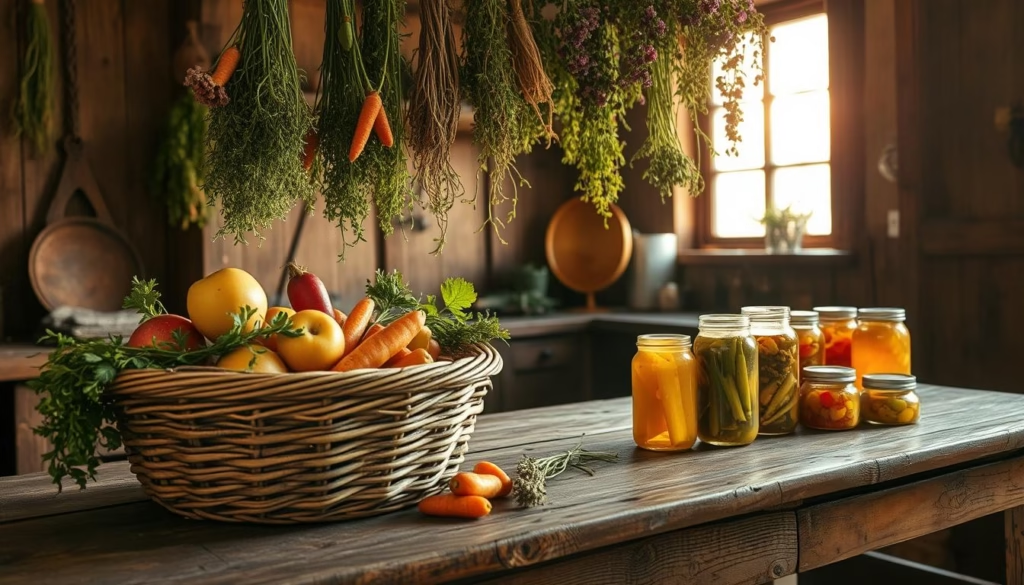
People have been preserving food for thousands of years. Early methods included drying food in the sun or smoking it over fires. Over time, these techniques evolved into more advanced practices like canning and fermenting.
Keeping food at the right temperature is crucial for safety. Proper storage helps prevent spoilage and keeps food nutritious. This is important everywhere, as it reduces waste and saves money.
In the following sections, we’ll explore specific preservation methods in detail. Understanding these techniques can help you enjoy your food year-round while staying healthy and saving money.
Essential Food Preservation Techniques for Safe Storage
Proper food preservation is vital for maintaining safety and quality. Using the right methods ensures your food stays nutritious and edible longer. Whether you’re making homemade jam or storing vegetables, following a trusted recipe or guideline is key to preventing bacteria and spoilage.
Storage conditions like temperature and humidity play a big role in keeping food safe. For example, homemade jam needs the right balance of sugar and acid to prevent mold. Similarly, vegetables require specific storage to stay fresh. These steps help reduce the risk of foodborne illness and waste.
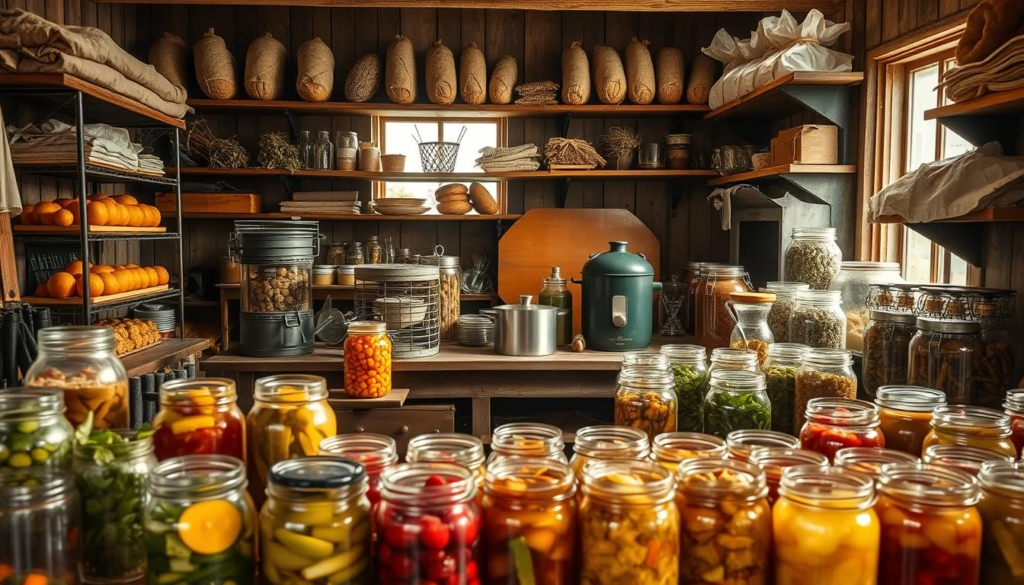
Common methods like canning and freezing are effective for everyday use. Canning, for instance, kills harmful bacteria and seals food to prevent contamination. Freezing slows down microbial growth, keeping food fresh for months. Both methods are easy to apply in any kitchen.
A careful process is important to minimize spoilage and waste. By following these steps, you can enjoy your food year-round while staying healthy and saving money. Proper preservation ensures your food remains safe and nutritious for a long time.
Recommended: How to Build a Food Stockpile That Never (Ever!) Spoils (Video)
Salting and Sugaring: Time-Tested Methods
For centuries, salt and sugar have been trusted ingredients in preserving food. These methods work by removing moisture, creating an environment where bacteria struggle to survive. Salt draws out water, while sugar lowers the water activity, making it hard for microorganisms to thrive.
Both salt and sugar are antimicrobial agents. Salt is often used for meats, like bacon, while sugar is great for fruits, such as jams. For example, salt can be applied directly (dry curing) or mixed with water (wet curing). Dry curing is perfect for meats, but wet curing is better for delicate foods.
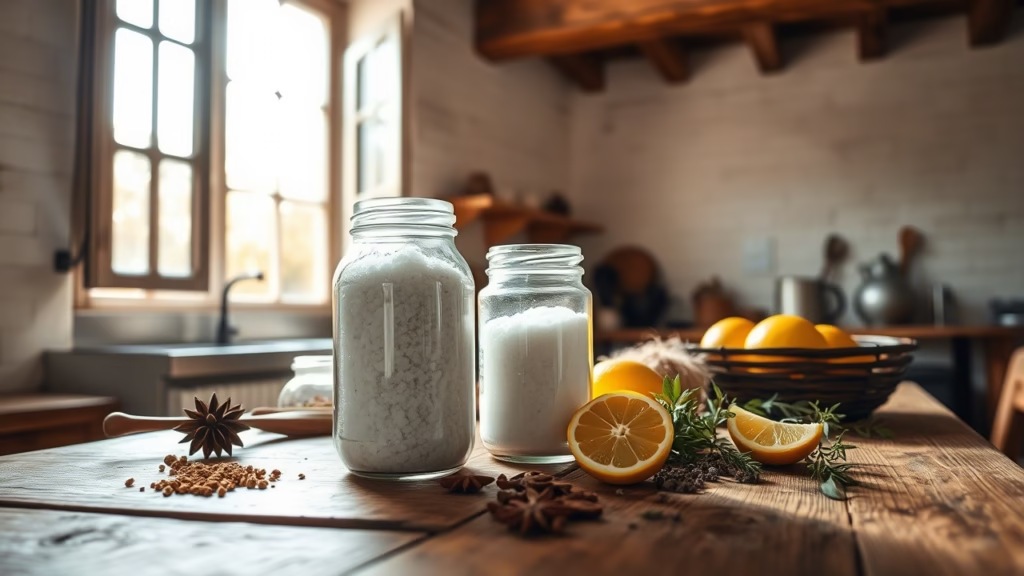
Using the right amounts of salt and sugar is key to safety. Too little might not prevent bacteria, and too much can make food unpleasant. These traditional methods are not just for storage; they also add flavor and texture, making them a great choice for home cooks aiming for sustainability.
Canning and Jar Preservation: Sealing in Freshness
Canning is a popular method for sealing freshness in jars, offering a reliable way to enjoy seasonal produce year-round. This process involves packing food into airtight jars and heating them to kill off harmful bacteria, creating a vacuum seal that prevents contamination. Essential equipment includes a large pot for boiling, jars, lids, and a utensil to remove air bubbles.
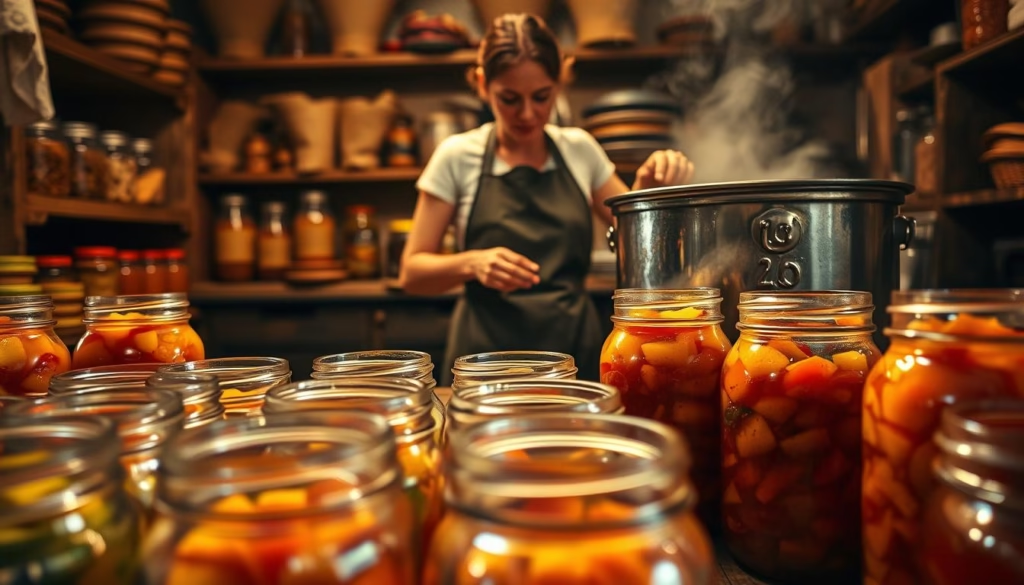
Following tested recipes is crucial for safety, especially to prevent the growth of bacteria like Clostridium botulinum. Practical tips include leaving the right amount of headspace, ensuring proper sealing, and following boiling procedures. For example, low-acid foods require pressure canning at high temperatures, while high-acid foods like jams can be processed in a boiling water bath.
While home canning is simpler than commercial methods, it still demands attention to detail. Canning effectively extends the shelf life of both fruits and vegetables, making it a versatile preservation method for home use.
Related: Forgotten Pioneer Survival Skills That Could Save Your Life Today
Fermentation: Creating Naturally Preserved Delicacies
Fermentation is a timeless method that harnesses the power of natural bacteria to transform sugars into acids or alcohol, effectively preserving food. This process not only extends shelf life but also enhances flavor and nutritional value.
By creating an acidic environment, fermentation inhibits harmful bacteria, ensuring food safety. It also boosts the health benefits of foods like cheeses, wines, and pickled vegetables by adding probiotics and enzymes.
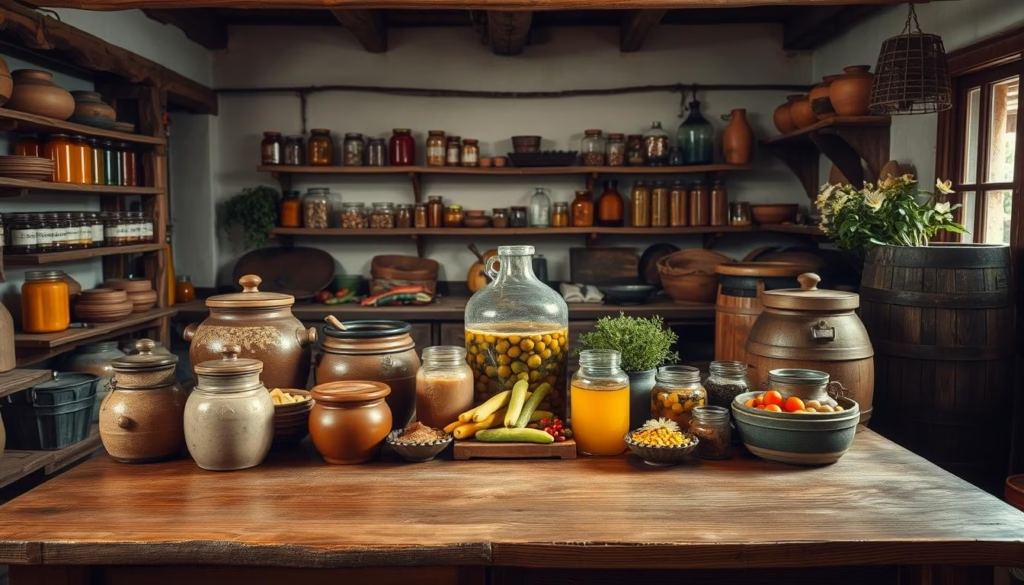
To ferment at home, control temperature (typically 68-72°F) and oxygen levels. Using starter cultures can guide the process, preventing unwanted bacteria growth. Proper conditions ensure a safe and successful fermentation.
When done right, fermentation minimizes bacterial growth while enhancing food’s health benefits. It’s a simple, energy-efficient way to enjoy nutrient-rich foods year-round, making it a valuable guide for home preservation.
Dehydration and Freeze-Drying: Removing Moisture Naturally
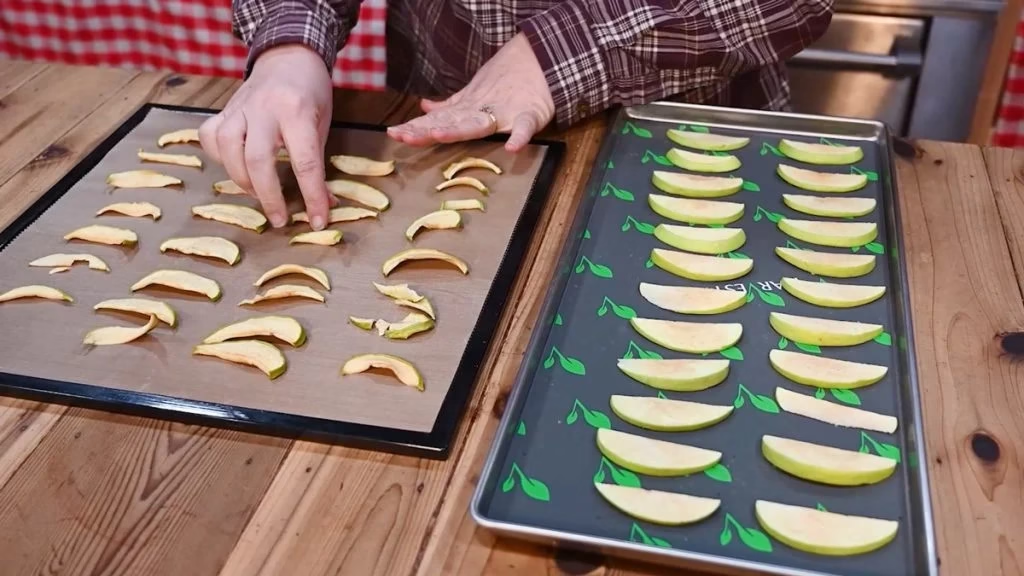
Dehydration and freeze-drying are excellent methods for extending the life of your food by removing moisture. These techniques prevent bacteria and mold from growing, keeping your food fresh for months.
Freeze-drying involves freezing food to a very low temperature, then removing the moisture through a process called sublimation. This method preserves the food’s nutrients and flavor better than dehydration, which uses heat to remove water. Both methods significantly reduce the risk of spoilage by eliminating the moisture that bacteria and mold need to grow.
Temperature control is crucial in both processes. Freeze-drying typically occurs at temperatures between -30°F and -50°F, while dehydration uses higher temperatures depending on the food type. For example, meats are dehydrated at 160°F, while fruits are done at 125°F. Proper temperature control ensures that the food dries evenly and safely.
Freeze-dried foods retain their texture and nutrients exceptionally well. For instance, freeze-dried strawberries are light and crunchy, while dehydrated ones are chewy. This makes freeze-drying a great choice for preserving delicate foods. Both methods are natural ways to keep your food fresh without adding chemicals, making them ideal for long-term storage without a freezer.
Checkout: The Lost Frontier Handbook
Traditional Cooling Methods: Root Cellaring and Burial Techniques
Long before the invention of modern refrigeration, people relied on natural cooling methods to keep their food fresh. Root cellars and burial techniques are two such traditional practices that have been used for centuries to store food without electricity.
These methods work by creating a naturally cool, dark environment that slows down bacterial growth. Root cellars, for example, are typically built underground where the temperature remains consistent throughout the year. This stable environment, usually between 32°F and 40°F, is ideal for storing root vegetables like carrots, potatoes, and beets.
The scientific basis for these methods lies in controlling temperature and humidity. Root cellars maintain high humidity levels, usually between 85% and 95%, which prevents moisture loss and keeps food fresh. The ground’s natural insulation ensures that the temperature remains stable, reducing the need for energy-consuming refrigeration.
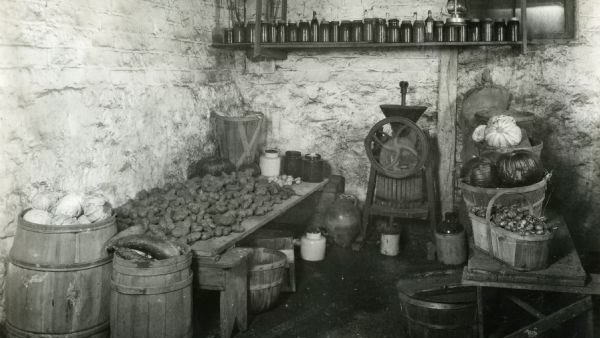
Historically, many cultures have used similar techniques to store food. In rural areas, people would often bury vegetables in pits lined with straw to insulate them. This method leveraged the earth’s natural cooling properties to keep food fresh for months. Even today, these techniques are valuable in areas where access to modern refrigeration is limited.
Setting up a root cellar at home is simpler than you might think. Start by choosing a spot with good drainage, preferably sandy soil. Dig a hole about 10 feet deep to reach stable temperatures. Line the walls with insulating materials like straw or wood, and ensure proper ventilation to maintain airflow. Shelves should be spaced 1 to 3 inches away from the walls to allow air circulation and prevent moisture buildup.
Compared to modern refrigeration, these traditional cooling methods are more energy-efficient and sustainable. They require minimal resources and no electricity, making them an eco-friendly choice for food storage. Plus, they help reduce food waste by extending the shelf life of seasonal produce.
For those looking to adopt a more self-sufficient lifestyle, root cellars and burial techniques offer a practical solution. They not only save money on energy bills but also provide a reliable way to enjoy fresh, nutritious food year-round without relying on modern technology.
Related: How to Stockpile Long Lasting Foods for Any Emergency
Vacuum Packing Without Modern Tech: A Simple Approach
Vacuum packing is a simple yet effective way to keep your food fresh without modern technology. By removing oxygen, this method prevents bacterial growth and preserves the smell, taste, and texture of your food. It’s a practical solution for extending shelf life without relying on complex equipment.
To achieve an airtight seal, you can use modern vacuum sealers or simple home methods. For instance, you can use a plastic bag and a bowl of water to create a vacuum effect manually. This technique works well for both short-term storage in the refrigerator and long-term storage in the freezer.
Compared to traditional canning, vacuum packing requires less equipment and is easier to perform in a home kitchen. It’s also energy-efficient, as it doesn’t require heating or boiling. This method minimizes the risk of spoilage and helps reduce food waste by extending the freshness of stored items.
However, careful execution is key to avoid potential safety issues. Improperly handled vacuum-packed foods can pose health risks due to the growth of anaerobic bacteria. Always ensure that the packaging material is food-grade and that the sealing process is done correctly to maintain safety and quality.
Pickling and Brining: Preserving with Acids and Salts
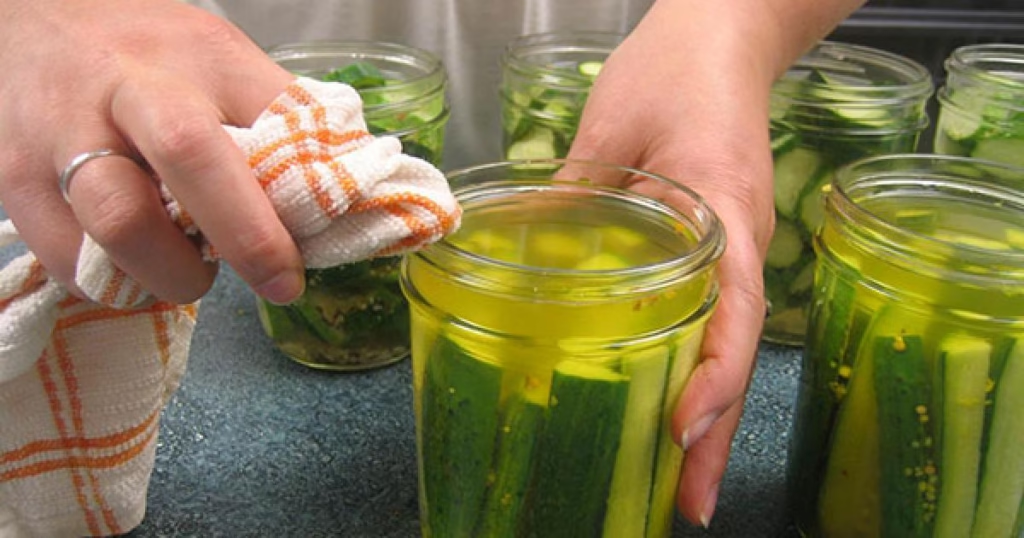
Pickling and brining are timeless methods that use acids and salts to preserve food. These techniques create an environment where bacteria struggle to grow, keeping your food fresh and safe to eat.
The process relies on acidity and salt concentration to prevent bacterial growth. Pickling often uses vinegar, which lowers the pH, while brining uses high amounts of salt to create osmotic pressure. This combination makes it hard for harmful bacteria to survive.
Common pickled foods include cucumbers, sauerkraut, and kimchi. Brined meats like bacon and ham are also popular. Using tested recipes ensures the right balance of salt, water, and acid for safety and flavor.
The process starts with preparing a brine or acid solution. For pickling, food is soaked in the solution and stored. Brining meats involves a saltwater soak to enhance flavor and texture. Always follow precise recipes to avoid risks like contamination.
While pickling can be quick, brining may take longer. For example, meats might brine for hours or days. Proper methods ensure your food stays fresh and nutritious, making these techniques great for home preservation.
=> 3 Ways to Refrigerate Food Without Electricity
Safety and Nutritional Maintenance in Food Preservation
Maintaining food safety is crucial in all preservation methods to prevent health risks and ensure nutrition. Proper techniques help retain the food’s nutritional value while avoiding harmful bacteria growth.
Key factors like temperature and moisture control are vital. For example, blanching vegetables before freezing preserves their color and nutrients, while correct canning methods prevent botulism. Using tools like the FoodKeeper app can guide storage times, reducing waste and risk.
Food safety training enhances knowledge and skills. A course in food hygiene can provide practical insights, ensuring safe handling and storage. This is beneficial for both home cooks and professionals aiming to maintain health and nutrition.
By following guidelines and monitoring storage conditions, you can enjoy nutritious, safe food year-round. These practices not only reduce health risks but also preserve the food’s quality, making them essential for everyone.
Conclusion
In today’s fast-paced world, traditional methods of keeping food fresh are still invaluable. These time-tested techniques offer practical solutions for everyday life, helping to maintain the quality and safety of your food without relying on modern technology.
From salting and canning to fermentation and dehydration, each method plays a vital role in extending the shelf life of your food. These practices not only save money but also promote a more sustainable way of living. For example, canning allows you to enjoy seasonal produce year-round, while fermentation enhances the nutritional value of your meals.
By adopting these methods, you contribute to a healthier environment and ensure your food remains safe and nutritious. Whether you’re a seasoned cook or just starting out, traditional food preservation offers a simple yet effective way to make the most of your food supply. Consider exploring these techniques further and even seeking out workshops to deepen your skills. With a little practice, you can enjoy fresh, wholesome food every day of the year.

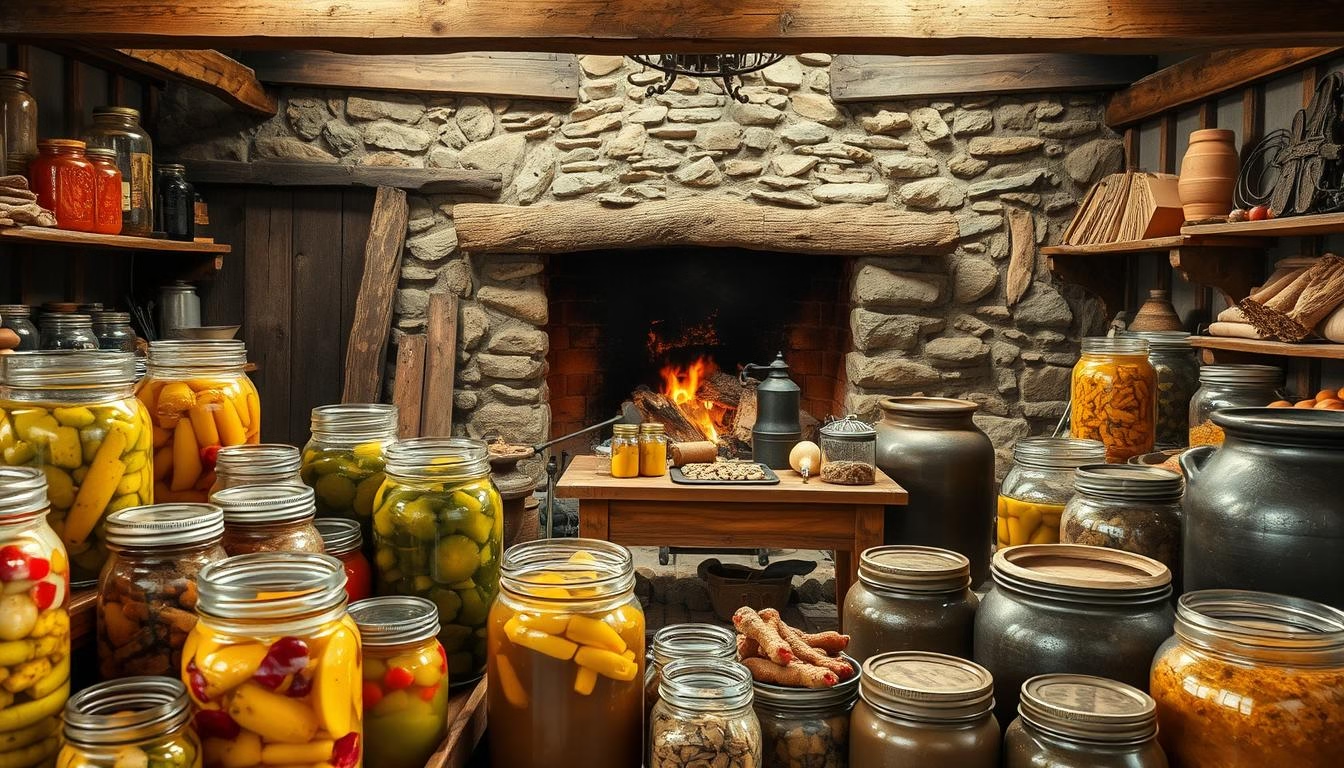


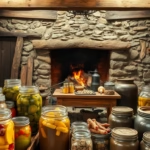


Want to purchase book
Click on any of the following book you like or want to purchase: